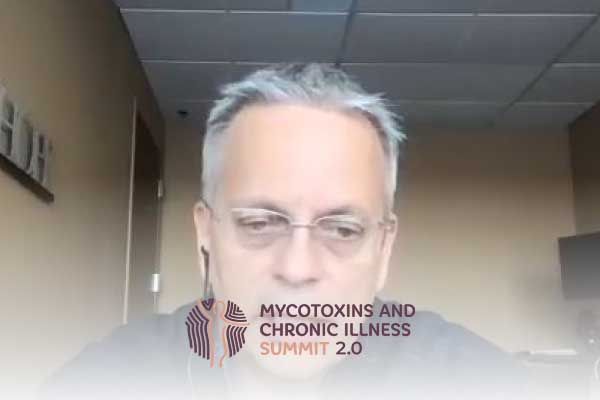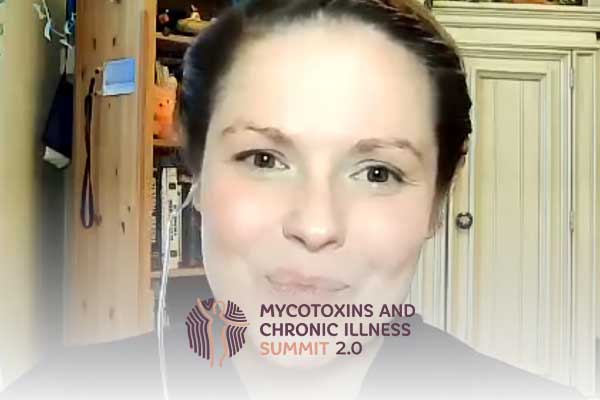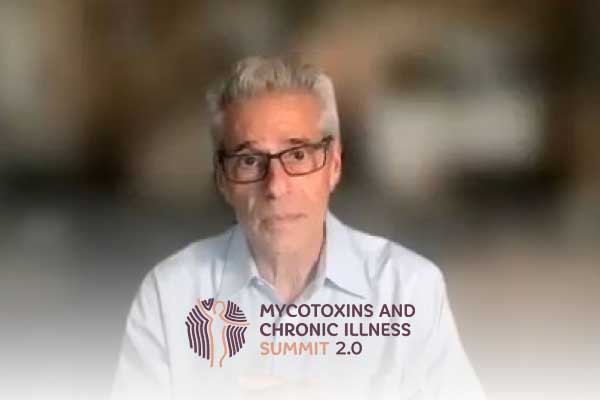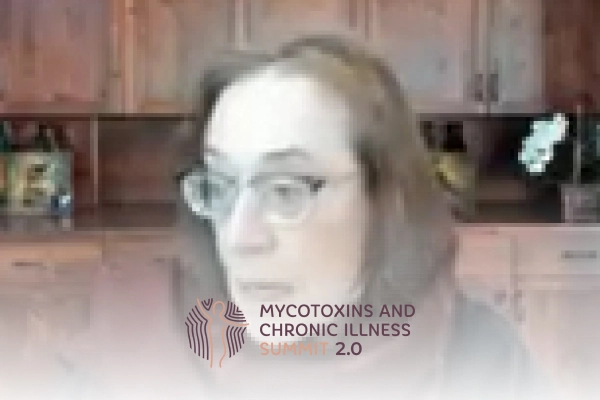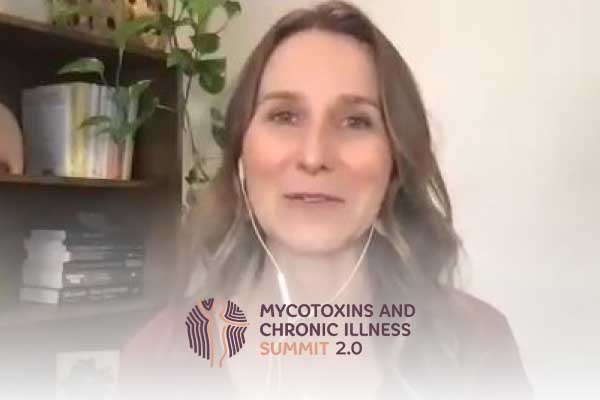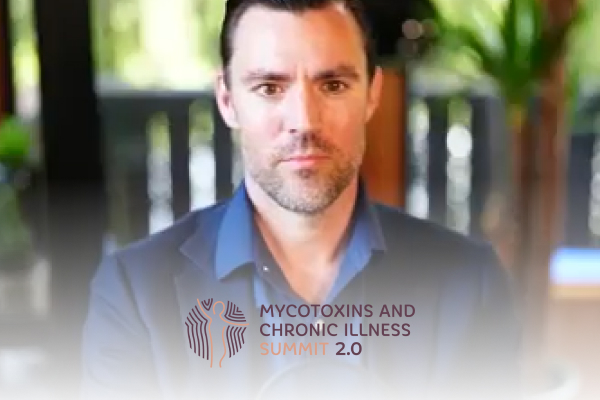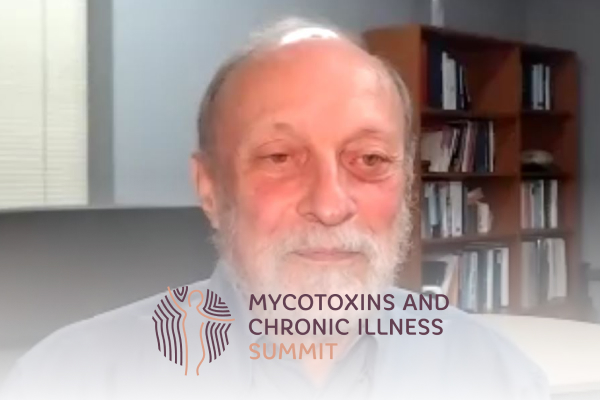Join the discussion below
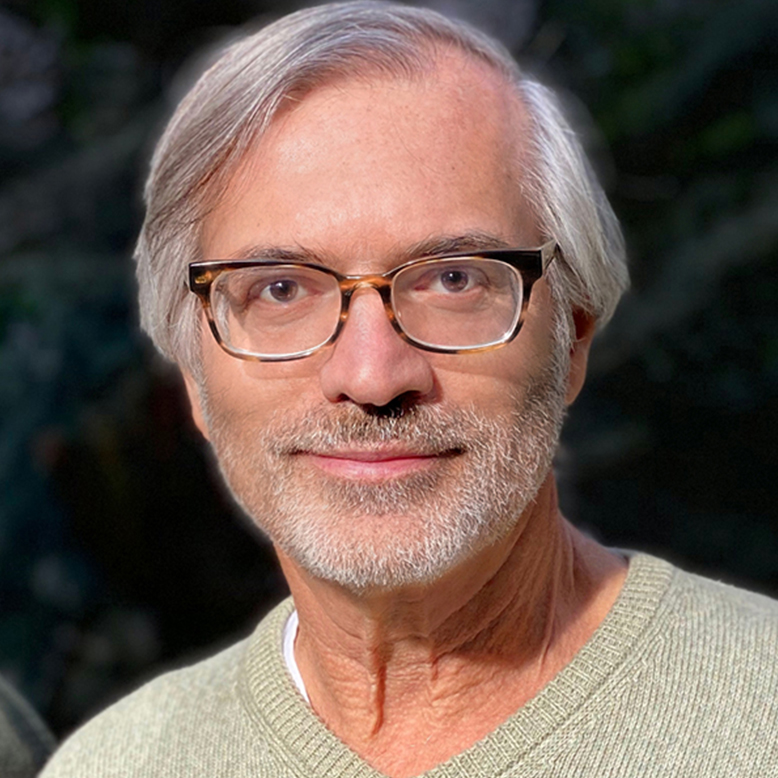
Eric Gordon, MD is President of Gordon Medical Research Center and clinical director of Gordon Medical Associates which specializes in complex chronic illness. In addition to being in clinical practice for over 40 years, Dr. Gordon is engaged in clinical research focused on bringing together leading international medical researchers and... Read More
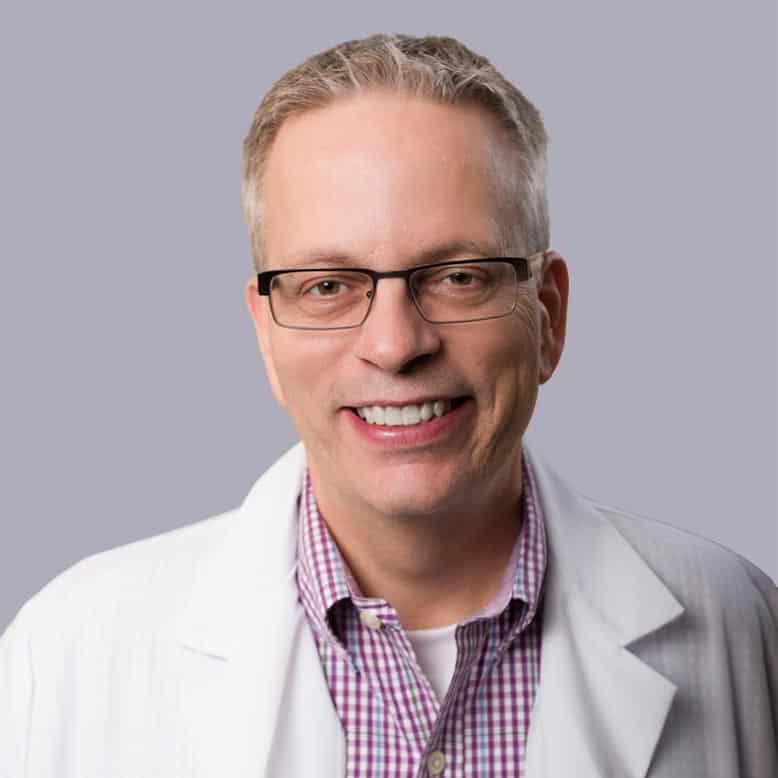
Kevin Conners, DPSc, FICT, FAARFM
Dr. Kevin Conners is the Clinic Director at Conners Clinic, an Alternative Cancer Treatment center. He graduated with his doctorate from Northwestern Health Sciences University in 1986 and has been studying alternative cancer care for over 23 years. He also holds AMA Fellowships and Board Certifications in Anti-Aging Medicine, Regenerative... Read More
- How the disruption of cell nucleus causes cancer
- What does liver detox have to do with cancer treatment?
- The benefit of Rife technology and how it works.
Eric D. Gordon, M.D.
Good afternoon and welcome to another edition of Mycotoxins and Chronic Illness. Today it’s my privilege to interview and discuss these issues with Dr. Kevin Conners. He is the director of the Conners Clinic, a clinic that specializes in the alternative treatment of cancer and this is a little different twist for our audience, ’cause generally we’ve been talking about other chronic illnesses, the chronic immune illnesses such as chronic fatigue, Lyme and of course mycotoxins and today we’re gonna hear about a whole area that we haven’t talked about much is the effect of mycotoxins on the immune system and how it can sometimes result in cancer and also have Dr. Conners tell us a lot about the immune system and how he works with it. So good afternoon and thank you for being with us.
Kevin Conners, D.PSc., FICT, FAARFM
Oh, it’s a pleasure. It’s a pleasure.
Eric D. Gordon, M.D.
Yeah, so first can you tell us just a little bit more of how you got, your journey about how you got into treating cancer?
Kevin Conners, D.PSc., FICT, FAARFM
Sure, well I didn’t start out that way. I graduated in 1986 as a chiropractor and really practiced what we would call today, functional medicine. So mainly chronic illness, hormone related things, fatigue issues, adrenal issues but I was always intrigued with Rife technology and so Rife is light frequency technology, I was intrigued with that in school but, hey, I’m a chiropractor, I don’t treat cancer because that was my idea of what Rife was for. Now we know it can be good for mycotoxins and it can be good for Lyme disease and things like that but at that time, that was my knowledge.
And it wasn’t until the late 90s that one of my patients came in and said, “Hey, I have breast cancer in both breasts “and they gave me three months to live “if I don’t do chemo and radiation and I’m not doing it.” So that was my kind of aha moment, it’s time to buy a Rife machine. So, got it ordered, she started using the Rife and long story shortly, she lived another 13 years but that was really my start with treating cancer patients. And since then, things have blossomed and that’s all we do now for the last 10, 15 years but it’s been a journey. We’re learning and one of the biggest things we look at is what is the cause? ‘Cause you have to address that, I really believe to get the best results possible and getting as specific as possible with the nutritional aspect and then using the Rife on all our patients as well.
Eric D. Gordon, M.D.
Right and is when you say cause, are you often looking for underlying toxicities or imbalances in the system?
Kevin Conners, D.PSc., FICT, FAARFM
Well remember, if we just define cancer, so cancer is a cell, your own cell that something has gotten inside the cell and affected the nucleus that’s really the center of replication. And now that cell is going through rapid replication, it is replicating cells that are going through rapid replication, so that’s the definition of cancer because all our cells will replicate, most of our cells. Our neurons tend not to and our cardio cells tend not to but your cells will replicate and then the mother cell goes through a process called apoptosis and dies and then this happens again over a period of time, usually eight to 12 to 18 weeks, you reproduce another cell and then that cycle replays itself.
When something gets inside the cell, it affects that cell replication process so that now it’s for some reason, the nucleus is affected and it’s replicating twice a day, that would be a pretty aggressive cancer. So anything you said, could it be toxins? Sure, that’s probably the most common thing but it could be a living organism as well. So for instance, with stomach cancer, the number one cause of stomach cancer worldwide, even according to the World Health Organization is H. pylori.
Eric D. Gordon, M.D.
Oh, right.
Kevin Conners, D.PSc., FICT, FAARFM
So that just happened to get inside the cell and is affecting that nucleus and that cell is now rapidly replicating. So if you don’t treat that, I mean, it just makes sense, you gotta treat the H. pylori as well.
Eric D. Gordon, M.D.
Right, right, right, right, okay. And but you have, again in our world of treating cancer, it’s all about slash and burn and kind of like kill and I’m assuming that your approach is a little different.
Kevin Conners, D.PSc., FICT, FAARFM
It is a little different and there’s a mixture of the, you do have to kill the cancer too but you want to improve the terrain at the same time. So, our approach is that it’s not just solely about the terrain but it’s not just solely about the germ either, you have to work on both those aspects, I think, to blend in a proper treatment program. So when we look at a cancer patient, we are looking at what is the cause? How are we gonna treat that? If it’s H. Pylori, you treat that with some nutraceutical or maybe even an antibiotic to ductile the H. pylori, but if it’s a toxin of some kind, then you have to pull that out of the body and you have to work on all those detox pathways as well.
But then you do have to find out what you’re gonna use to kill those cancer cells that are in rapid replication. So, is chemotherapy the right thing to do? Well maybe, maybe not but our approach, we wanna find what nutraceutical approach is gonna be best for that patient, whether the patient is choosing to do chemo or not, what is the best nutraceutical approach to help attack that cancer? And then we use Rife technology. So the Rife just stimulates the cancer cells at their own frequency so it can stimulate an immune attack on the cancer because remember, cancer is your own cell going through rapid replication.
So your immune system is… got a fail safe mechanism and it won’t kill your own cells, otherwise we’d all be dead from multiple autoimmune diseases. So you have to get the immune system to look at that cancer another way and that’s where Rife technology could be so beneficial cause you’re hitting that growing cell mass at its own frequency so your immune system will at least take another look at it and it can help the cell mass uptake chemo, it could help the cell mass uptake a nutraceutical approach that you’re doing so it can help with killing the cancer.
Eric D. Gordon, M.D.
I love that explanation, that really does actually kind of widen my picture sometimes of how to use the Rife frequencies. Yeah, so you don’t, you’re not necessarily having to kill the cell but you’re at least changing it enough to make it more interesting to our immune system.
Kevin Conners, D.PSc., FICT, FAARFM
Right, exactly. And we really wanna just make it stop replicating. You know, a lot of people are like, oh I have this mass in my breast and I want to go away. Well, wouldn’t you just be happy if it just stopped replicating? Stopped acting like cancer? Could you live with that three centimeter round mass in your breast the rest of your life if you lived a long life? And we gotta sometimes change people’s thinking about cancer as well.
Eric D. Gordon, M.D.
Right, yeah, yeah, we don’t to be perfect, we just got to be well.
Kevin Conners, D.PSc., FICT, FAARFM
That’s right, exactly.
Eric D. Gordon, M.D.
Yes, yes. So tell me more about what you’ve seen as far as how, when we’re talking about triggers, how mycotoxins, in your experience, have been a trigger for setting off cancers.
Kevin Conners, D.PSc., FICT, FAARFM
Well, in a couple ways. So mycotoxins can be a direct cause because they can be something that gets inside the cell and interrupts that cell replication phase of the nucleus. Just because a to gets inside the cell doesn’t mean it’s gonna cause cancer, right? But if it, by chance, affects that replication phase, it can be a cause of cancer. It can also indirectly affect the process of cell death, the process of apoptosis, ’cause it can block those intrinsic apoptotic pathways. So there’s that way, that it can be a direct cause. Secondly, it can be kind of a sub cause.
Maybe there’s something else that got inside the cell, maybe a glyphosate or something that is damaging the nucleus and causing cell replication but then a secondary mycotoxin issue is causing kind of a ramped up pro-inflammatory terrain problem. And when you have that going on, it makes your immune system that much… puts that much more straight on one’s immune system to be able to kill a cancer. Because in truth, all of us have cancer right now. So it’s either your immune system is taking a second look at that mass and killing it, therefore you’re never receiving a diagnosis or it gets out of hand and it gets to a point where it’s three, four, 10 million cells large and now can be seen on a CAT scan, or a CT scan or palpated and we get a diagnosis.
So if your immune system fails to correct that issue, then you end up with a diagnosis. Then, well, what are some reasons why your immune system didn’t kill that cancer? Well, one of them, and a major one today is this, just this kind of hyper-inflammatory state that we all live in because of things like mycotoxins but also other oxidizing agents that we’re exposed to on a daily basis that even if you’re eating organic and doing everything right, you can’t not be exposed to this and radiation and cell phone EMFs, I mean, we’re just being bombarded with all sorts of toxins that are causing a pro-inflammatory kind of rage in our body. So we got this kind of always amped up inflammation due to these things and then that put so much stress on our immune response that is supposed to kill things like bacteria and viruses and cancer cells.
Eric D. Gordon, M.D.
Yes, it gets in the way of the immune recognition. I mean, something that when I first started in the field of treating chronic illness, I didn’t quite understand ’cause from a… my medical training, I kind of didn’t think in terms of things distracting the immune system, I mean, it was just, I don’t know, it was very black and white thinking and it was only working with natural pass and really seeing that when you knocked out one infection, many times the body then was able to deal with another one and so that was present but you weren’t reacting to and I think you’re trying to allude to that same issue with cancer is that if the body is distracted, it just will not notice the cancer.
Kevin Conners, D.PSc., FICT, FAARFM
Yeah, that’s exactly right. Yeah, it’s trying to fight a battle at too many fronts you could say. And when you do that, you could lose a front that’s quite important.
Eric D. Gordon, M.D.
Yeah, now that is fascinating way to see it. And I just didn’t realize how important it was because again, we see, in my world, I don’t treat cancer patients, I haven’t seen that many people with this presentation but since this is your world, that’s what you get to see. It’s very important. So, as far as the, where I’ve looked, you seem to have a very biochemical approach sometimes and I mean that in a good way, I mean thoughtful, biochemical approach to supporting detox. Can you talk a little bit about that?
Kevin Conners, D.PSc., FICT, FAARFM
Yeah, so when we look at detox, I know that people look at detox, they think of the liver and there’s phase one, phase two, phase three liver detox pathways but I define it a little bit deeper than that because if our liver is doing everything it should be doing and it’s pulling stuff out of the blood and dumping it into the small intestines like it should be doing, if you have damage in the gut, you could just be, and we are so often just reabsorbing these poisons again. And I kind of think in cartoonish form so I think of the liver seeing these poisons come around that just three days ago they did such an effort in getting rid of these things out of the blood and they see these things again and they go, what in the world are you doing here again?
Didn’t I just throw you into the intestines three days ago? It’s kind of like just letting the criminals out of jail all the time when the police are trying to bring them into jail maybe, I just thought of that analogy but maybe it’s not a great one. But you have to fix the gut, you have to make sure that you’re binding things in the gut, you have to make sure you’re eliminating, that’s number one. We talk to people all the time, Oh yeah, I have normal bowel movements. I go every three days, clockwork.
It’s like, no, you don’t have normal bowel, we need to be eliminating properly, we need to have good intestinal transit time, we need to be binding things that they gut, dealing with leaky gut issues, we need to be supporting the gallbladder and bile flow and then we need to be working on phase two and phase one liver detox pathways and looking at those genetically as well before we ever start trying to kill a bunch of stuff, which is gonna produce a ton of endotoxins that have to go through these phase one, phase two liver pathways or trying to chelate things like chemicals and heavy metals and things out of the tissues. And understand, these things, all these phases of detox, I call it the seven phases of detox, they can be done concurrently but you have to address those downstream pieces first or you’re going to get back up and you could actually make the person sicker than when they started.
Eric D. Gordon, M.D.
I think that is a theme that we’ve discussed and we’ve heard from almost, most of the experts that we’ve spoken to has been this focus on what actually Dr. Parpia has called pretox, exactly what he’s talking, is making sure that the pathways are open. That the inflammation in the gut is down. And so when, it’s just fascinating that we’ve all been, not just taught, but I think many of us, especially, I said a lot of the doctors in the audience have tried to bypass those pathways, those steps and it doesn’t work well.
Kevin Conners, D.PSc., FICT, FAARFM
No, it’s not gonna end well, that’s right.
Eric D. Gordon, M.D.
No, no, cause we, I think the problem with physicians is that they start off seeing a lot of action in the emergency room where you get to be the hero in the moment.
Kevin Conners, D.PSc., FICT, FAARFM
Right, yeah.
Eric D. Gordon, M.D.
I think probably just like chiropractors, where sometimes you get to just do the adjustment and they’re all better.
Kevin Conners, D.PSc., FICT, FAARFM
Yeah, it doesn’t work that way when you’re dealing with chronic illness.
Eric D. Gordon, M.D.
No, no and that is the importance. So what are, did you have any favorite if you will or maybe not favorite, but things that you’ve found to be really helpful as your, working on the liver, gallbladder, gut, quieting down the gut, any particular pearls that you think are?
Kevin Conners, D.PSc., FICT, FAARFM
Well, one of the things we do in our office that may be very different than what somebody listening to this might wanna do is, we highly recommend coffee enemas. So a coffee enema is you think, oh my gosh, I don’t know what a coffee enema is but really the purpose of coffee enemas isn’t really to have a bowel movement, which might be the purpose of enema if somebody is constipated but you do a coffee enema to stimulate the neurology of detoxification.
So the neurology of detoxification is through the parasympathetic nervous system and that’s what’s stimulated with a coffee enema, that’s really the primary purpose of that. But there’s different products that we use to help heal the gut. There’s different binders that we use that grab onto things to, even if a person does have a leaky gut that can help from, help to keep from reabsorbing poisons that are dumped into the gut by the liver and then there’s the simple things that you can do to help decrease the viscosity of the bile, to help the bile flow, just simply simple, like putting a hot pack over your liver-gallbladder area could help decrease the viscosity and help bile flow because ultimately, the liver takes the toxins and puts them in the bile and then it flows from the liver into the small intestine via the gallbladder but it’s dumping it into the small intestines.
So the purpose of the bile is to carry toxins from, ultimately from the tissues and the blood through the liver, that have been processed in the liver, put in the bile, brings it to the small intestines and then it’s supposed to end up in the toilet. So if it’s not ending up in the toilet, then you’re really taxing your liver. So it’s…
Eric D. Gordon, M.D.
As far as binders, are there any favorite binders that you like to talk about? I mean, I don’t wanna…
Kevin Conners, D.PSc., FICT, FAARFM
Well, there’s a lot of them out there from just humic and fulvic acid to different clays, like bentonite to like zeolite type things. Just fiber can be a binder. Just fiber in your diet can be a wonderful binder so eating good vegetables, they act as a binder without having to take a pill, supplement form. Those are maybe your best dietary binders are just eating vegetables. So, but it’s yeah and then working on healing the gut because we know that we all have damaged guts, especially in America where we’re exposed to glyphosates, even if you’re eating all organic.
Eric D. Gordon, M.D.
Yeah.
Kevin Conners, D.PSc., FICT, FAARFM
There’s gut damage that’s going on. So everything that you could be doing on a regular basis to be working on the epithelial lining of your gut can be beneficial.
Eric D. Gordon, M.D.
Yeah and you used a phrase that I hadn’t heard before but I really liked, which is stimulate the neurology of detox.
Kevin Conners, D.PSc., FICT, FAARFM
Yes.
Eric D. Gordon, M.D.
That is very, very nice. I mean, the coffee enema, any other, I mean, you said, you talked about heat, anything else that you are using on the physical levels to help stimulate that neurology of detox?
Kevin Conners, D.PSc., FICT, FAARFM
Oh, sure. There’s, I have a couple papers out there about stimulating the vagal nerve. So just, everybody wants to talk about the chemistry of detox, right? So we’re gonna use milk distiller or we’re gonna use artichoke leaf to help with phase one, phase two detox and there’s a lot of other products that you could use and those are all great but we sometimes forget that everything’s controlled by your nerves, everything’s controlled by your neurology. So you don’t have to think about oh, I got to detox, I got to make my liver detox, those are done automatically. Your autonomic nervous system and you have those two sides of that autonomic nervous system.
You have sympathetics which control your fight or flight or freeze mechanism that is essential to dealing with stress in your environment to dealing with emergencies in your environment. A tiger jumps down in front of you, you need to be able to fight or run away as fast as you can and in that moment, in a split second, neurologically, it changes our physiology. So when we’re under a stressful time, okay, we got a letter from the IRS, oh my gosh, before opening it, your sympathetic tone just bounces up and your eyes dilate, your blood pressure goes up and I mean, you can feel your face flush. Everybody has felt this when you hear a siren behind you in a car, oh my gosh, you just get this little stress bump. That is the neurology your sympathetics kicks out your adrenals, it will increase your blood pressure as I said, it’s gonna dilate your bronchial tube so you can get air in your lungs ’cause you gotta run away.
And it’ll shunt blood to your extremities so that you can run away or fight. But it also shuts down the other side, your parasympathetics and your parasympathetics control all your detoxification pathways neurologically to your liver, controls all your gut peristalsis, controls all your sexual function, your parasympathetic really controls everything you need really to live outside of a crisis. So your sympathetic controls what you need to survive in a crisis but you’re not supposed to be kicking, we’re not supposed to be finding ourselves in a crisis 47 times a day, like us Americans are finding ourselves in with the stress levels. So we talk about of things that shut down a person’s immune system, it’s a sympathetic drive. So your parasympathetic control your entire immune response.
So one major reason why the uptick of cancer in the last 40 years is we could say, well we’re exposed to all these toxins that our ancestors were never exposed to. Yes, that’s true. We’re exposed to, we could go on and on with the list of chemistry, but sometimes we forget that we are put in a more stressful environment where we have to process, X amount of bits of information that our ancestors could process in a year mentally and have to make decisions and deal with… the stress level that we have is exponential and that comes with an increased sympathetic tone and decreased parasympathetic tone.
So our rate of detoxification is gonna be hindered just right there from our neurology. And our health of our immune system, even though we might run a blood test and have, well, I have an adequate T-cell count and my macrophage count is up there and my white blood cell count is up there but how activated are they really has to do with that immune response. And they’re going to be sluggish and slow and slower to respond to bacteria and virus and other bio-toxins as well as cancer and that could be a cause for a lot of problems.
Eric D. Gordon, M.D.
Yeah, that is true. Our sympathetic nervous system just doesn’t get enough time off.
Kevin Conners, D.PSc., FICT, FAARFM
Yeah.
Eric D. Gordon, M.D.
We are in information overload. I was just thinking back when you and I were growing up, the only information you got was either a phone call was the most intrusive. Everything else, you got the mail only once a day.
Kevin Conners, D.PSc., FICT, FAARFM
Yeah, exactly, that’s so true. So there are, you asked what other things a person could do. There’s, I wrote a whole paper on, you could look at the blog post if you just search our website for sympathetic or parasympathetic, put in one of those words, there’s a paper on how to decrease sympathetic tone ’cause the sympathetics are controlled by a part of the brain called the mesencephalon. So how can you slow down the mesencephalon neurologically? And how can you stimulate the parasympathetics? The parasympathetics are mainly controlled by a nerve called the vagus nerve or cranial nerve 10. It’s also called vagal stimulation, so how can you do vagal stimulation? There are some physical things that you can do that can help with that. Calm your sympathetics and can stimulate your parasympathetics.
Eric D. Gordon, M.D.
Yes and so you, one of your favorite physical tools I guess, was the coffee enema, that’s a good way to start.
Kevin Conners, D.PSc., FICT, FAARFM
Yeah, that’s a good physical tool to start. You could do things like gargling, like a hard gargle because you have the cranial nerve 10 exposure at the larynx there, so that stimulates cranial nerve 10. Things to calm your sympathetics are simple things like calming your light exposure through your retina. So like putting on sunglasses can help calm your sympathetics and you notice how when people have a hyperactive sympathetic system tend to be more sensitive to the sun. So neurologically, they’re desiring to wear sunglasses more so because their eyes are more bothered by the sun because their pupils are dilated because they’re in a sympathetic overdrive. So there’s a list of different things you could do to help calm that down from a physical standpoint and then you can work on the chemistry as well to help with detoxification pathways to support phase one and phase two liver or to heal the gut. Lots of work to do, right?
Eric D. Gordon, M.D.
Lots of work to do. I mean, that is… it’s just finding the right work for the right patient. So as far as testing, I mean, how much testing do you bother to do or do you do more by history? You’ve had a lot of experience. I’m always curious when people have had a lot of experience with where they decided ’cause in the beginning, everybody tests.
Kevin Conners, D.PSc., FICT, FAARFM
Yeah, so our testing is a little bit different than what I used to do when I was, would take on a thyroid patient or something like that. So with a functional medicine case, you need to do more functional medicine tests. We need to see appropriate T3, T4, reverse T3, blah, blah, blah, for thyroid but with cancer, we’re looking for what we believe the cause or causes usually are. So we have to do more specific testing. We get a cheek swab from people, we do kinesiology testing on that to come up with those markers. Most of our cancer patients are still working with an oncologist, so we’ll request different labs and then there’s other things that you can do, regardless whether it’s a cancer patient or not to look for other inflammatory markers.
So looking are there food sensitivities that you need to deal with that’s causing all this inflammation in the gut, that’s damaging the gut no matter how much you’re working on trying to heal it? Are there other imbalances that you need to deal with like heavy metal toxicity, even though it’s not necessarily the cause of the cancer, do we need to deal with this because it’s causing a pro-inflammatory cytokine surge that’s affecting that person’s ability to heal? So everybody’s different in what testing that we require and want to see. Much of it, all of the work that we do is distance work now so we have patients from around the globe. So we have to work with labs in other countries sometimes, it’s a little more difficult but we usually get things done.
Eric D. Gordon, M.D.
Okay, well and so you, so I guess for you, it’s the history and the kinesiology that kind of guide your approaching?
Kevin Conners, D.PSc., FICT, FAARFM
That’s a big piece of it. We also do genetic testing. So we look at genetics snip testing. That’s a big piece when you talk about phase one and phase two liver pathways, you wanna look at those cytochrome P450 and the pond pathways, et cetera, to look at where there are a lot of defects in those pathways, that person’s probably, even if they had a clean liver and there was no other issues, they’re gonna be slower detoxers usually. So you need to address that and support those pathways as well.
Eric D. Gordon, M.D.
Yeah, so the detox, so the genetic, you use the genetic testing for really evaluating the pond and for phase one, phase two, any other highlights of the genetic testing that you find most useful?
Kevin Conners, D.PSc., FICT, FAARFM
Oh, there’s a lot of things we look at. With cancer, histamine is often a problem as well.
Eric D. Gordon, M.D.
Right.
Kevin Conners, D.PSc., FICT, FAARFM
Histamine can be one of those co-producers of cancer, kind of like mycotoxins. Not always the cause but it could certainly make things much worse, especially with breast cancer. But so looking at the HNMT genes, their ability to clear histamine out of the body and the DAO genes with histamine in the gut.
Eric D. Gordon, M.D.
Right, right, right. Yeah and just the HNT are just things that allow us to methylate, to get rid of the histamine and yeah, the DAO, so we can break down in the gut, the excess histamine. Do you, so this is just, I like the way you kind of triangulate, you’re coming from many different directions and that’s what’s I think, so, well probably, why you’ve been successful is that you’re not approaching, this is, oh, we’re just gonna treat, with a Rife and not just using the Rife alone but you’re really looking for all the supporting pieces here. So your… when you’ve done the genetic testing, at this point, you’re using one particular system?
Kevin Conners, D.PSc., FICT, FAARFM
Well, we could use any genetic test. We have one that we tend to use because it gives us the most snips but then we put it in our formulation of the most important snips to look at. So, I mean, of course we’re looking at, dealing with cancer, we’re looking at oncogenes and tumor suppressor genes, but you have to look at, yeah, you wanna look at methylation, you wanna look at all the different metabolic pathways, as many that you can because again, I just think that if you… the farther away you stand, the bigger picture you can see. So you wanna be able to take as big a picture as possible to really assess what’s going on and try to put out as many fires as possible to get healing to take place ’cause usually with a complex case, like somebody has cancer, there’s a lot going on. A cancer just didn’t start growing for no reason, there’s a cause and the reason why it wasn’t put out, there’s causes to that too. So you wanna deal with as many of those as possible so that you give that person’s body the best ability to knock it down ’cause it’s the immune system that’s gotta do the work.
Eric D. Gordon, M.D.
Well I was just wondering if you had, ’cause what we sometimes try to do is give people options ’cause as our viewers are people often who’ve been on this path for a while. They’re not necessarily newbies ’cause they’ve been often ill or have family members who’ve been ill and so they are just… just so particular labs that you like? I don’t mind mentioning names, it’s fine, just say that course or supplements that you have found particularly helpful.
Kevin Conners, D.PSc., FICT, FAARFM
No, there’s not a, I guess I wouldn’t pull out any specific labs. There’s lots that I like but for practicing and taking care of cancer patients, it’s more specific to our kinesiology testing as far as dealing with the cause and working with that. Yeah, I do have my favorite nutraceuticals, though in like my book “Stop Fighting Cancer,” there’s probably a hundred different cancer killing nutraceuticals. One of our big things is that taking too many things can be a bad thing, right?
Eric D. Gordon, M.D.
Okay, so tell us more about that ’cause I really have seen that.
Kevin Conners, D.PSc., FICT, FAARFM
Well we see patients that, like you said it, have done their own investigation and they’ve been dealing with cancer for maybe a couple years and they call us because they’re not doing well usually and many times, they’re taking a whole boatload of different supplements. Because their aunt contacted them when they heard they had cancer and they said, my brother’s, sister’s, friend’s wife used this and I’ll send you some and you know these things add up and it becomes overwhelming. You’re like drinking from a fire hose as the patient, trying to figure out what to do and you’re scared.
So you just tend, some people tend to just try to do everything and that can in itself overwhelm the liver ’cause anything that you consume, that you absorb has to be detoxed, has to go through your liver. If your tissues and your cells can’t utilize it, you can overwhelm the liver by trying to do good things. So even good products, okay, well Essiac can be, is a product that can kill cancer but is it gonna work for me? And if I’m taking Essiac but I heard Hoxsey was good too so I gotta take that and I heard Protocel was good, that’s good. I gotta take curcumin and I gotta take this and I got to take that and you’re on now 30 different things. You might not even be on the thing that is actually gonna work for your cancer and you could just be making yourself worse honestly. So you wanna be as specific as possible so that a, you can take as few of things as possible and b, you’re going to basically be more laser focused in what your body needs, the specific nutrient that’s gonna be the best thing to help knock that down.
Eric D. Gordon, M.D.
No, I used to call that the shopping bag sign when people would come in with two shopping bags full of supplements and it’s like, I think yeah, ’cause everything sounds like a good idea, when you you’re read it, it’s always good but too much is not good. And so when you use kinesiology quite a bit to help narrow that down?
Kevin Conners, D.PSc., FICT, FAARFM
We do, yeah. We try to get as specific as possible, we try to keep people at as few as supplements as possible and sometimes one of the more difficult things we have is trying to divorce people from the dozens of things that they’re taking. And we never wanna interrupt if the person feels like they’re really led to take this thing, even though it doesn’t test well, well then by all means, trust what God’s telling you but we want to be as specific as possible so you’re not taking too much stuff.
Eric D. Gordon, M.D.
And I think that’s a very wise point in there is that when somebody has a deep intuition, it’s good to listen but when it’s because your cousin told you to take it, maybe you should listen to the doctor.
Kevin Conners, D.PSc., FICT, FAARFM
Right and a lot of people we find they’re taking it out of fear. So that’s never a good thing to do with anything, is to be motivated that way. But I get it, I understand that but we still have to overcome that.
Eric D. Gordon, M.D.
Yeah, yeah, yeah. Hope is better, is a much better driver of the immune system.
Kevin Conners, D.PSc., FICT, FAARFM
Yes, for sure.
Eric D. Gordon, M.D.
‘Cause fear does tend to keep that sympathetic drive going.
Kevin Conners, D.PSc., FICT, FAARFM
That’s exactly what it does.
Eric D. Gordon, M.D.
Yeah, yeah, yup. So, just getting back a little bit to, is there any particular detox mode that comes up for you when you feel it’s more mycotoxin driven or that’s not a bigger, I mean, I don’t know how big of a part that is in your world.
Kevin Conners, D.PSc., FICT, FAARFM
Well, the beauty of using the Rife is that the Rife, really is it, with any tool that you’re using, you wanna use it appropriately. So you don’t use a hammer to screw in a screw, you don’t use a Rife to pull out heavy metals, that’s not what it’s for but the Rife will help your body kill your cancer cells and it will also help kill any other biotoxin, that’s what it works best on. So when a biotoxin is a cause or a piece of the cause, any type of biotoxin, whether it be mold or a Lyme disease or a bacteria or a virus, that’s where the Rife really shines too cause you could program that person’s program for the biotoxin that comes up as well. And then it’s really supporting those pathways. You’ve gotta support those pathways so if you are actually killing a mold or a bacteria that is gonna produce endotoxins, then you have to be able to get those things out of the body and that’s where the detox pathway support is so important.
Eric D. Gordon, M.D.
Yeah, that’s so true. One of the most disappointing things is people, I see people who get really good therapies but because they didn’t get the appropriate detox support, they give up up on the therapy ’cause it just made them sicker.
Kevin Conners, D.PSc., FICT, FAARFM
Right.
Eric D. Gordon, M.D.
And I always like to let people know if it made you sicker and it’s not really an over a toxin, you should take a little look, it might just have been pushing you too far from where your body was at at that moment.
Kevin Conners, D.PSc., FICT, FAARFM
Well, you really look at why did you get sick in the first place? Well, I was exposed to all these toxins, well, why did your body not get rid of them? Yeah, you could have and often do overwhelm our liver and we’re toxifying ourself because we’re, we can’t detox at the rate that we’re poisoning ourselves so then you have to go back to fix that problem. So it’s not so much, we gotta, oh, we need to pull that, I need to do chelation therapy and pull that toxin out of my body. Really, if you just started opening up those, the dam and the river, your body will pull, will release that heavy metal and you’ll be able to get rid of it.
Eric D. Gordon, M.D.
That, okay, I’m gonna, just, what’s that word that the young, unpack that, yes. Say a little ’cause that I think is a really important point that so many people are hyper focused on like I have to get the right chelator in there and you’re opening up, I think the more important part is how about looking about why that wasn’t leaving in the first place? So, any more you can add to that to get people to really understand that concept a little better?
Kevin Conners, D.PSc., FICT, FAARFM
Well, I just think sometimes, just the way my brain works is try to put in a cartoon form again. So if you think of your whole detox pathway from the cell to the toilet as a river, if you have a blockage somewhere, you have to get rid of that blockage because where there’s stasis, then you’re gonna have sickness. So you have to open up that blockage and you gotta start down stream. So you gotta start at the end and then move your way up to remove those blocks to get that flow starting to move. And again, if you don’t that and it is like you’re so fixated on I gotta get rid of this poison ’cause I did this heavy metal test, hair analysis or whatever you did and it showed high mercury so I got to get, I need to start doing chelation and start pulling this out of my body. It’s like, you are making a mistake right there. You have to open up that stream and again, many times, you don’t need to use a chelator at all. Your body will flush that once you start opening up that stream.
Eric D. Gordon, M.D.
Yeah, I like using your analogy, it’s like a little bit chelation in that story is almost like getting a bigger barge. And you’ve got a blockage and so you need to get that barge stuck.
Kevin Conners, D.PSc., FICT, FAARFM
Yeah, exactly.
Eric D. Gordon, M.D.
That’s a very nice way to put it, I like that. Yeah, I think that’s very helpful because, it’s our kind of our linear approach to thinking about disease is often if you have a problem, you just have to take it out but you forget that there’s pathways that should have been open. This shouldn’t have been there in the first place ’cause you were living next to a toxic dump. You didn’t get more exposure than most of the people around you so think what’s happening differently in your system that has caused this toxin
Kevin Conners, D.PSc., FICT, FAARFM
Yeah, exactly.
Eric D. Gordon, M.D.
Build up. Yeah, yeah no, that is, I love, I really appreciate the way you think about medicine and toxicology but just as you say, the way of healing, how the body works, the chiropractic, I always appreciated the alive model. Medicine often has a very dead model.
Kevin Conners, D.PSc., FICT, FAARFM
Yes, yeah.
Eric D. Gordon, M.D.
We forget, we forget. So in your approach, I know that at this point, you’ve said you’re really focused just, you’ve gotten well known enough that cancer patients are the people that you focus on, you just don’t really have time for other things anymore. But when you were treating people with, things like chronic Lyme disease and issues, was there anything that was significantly different in your approach?.
Kevin Conners, D.PSc., FICT, FAARFM
Oh, there’s a lot of things different for sure. And one of the things that you have to be really careful and this is a huge mistake we see in the Lyme community is they wanna kill this bug, this bacteria, we want it to die. The problem is that, again like we said, if you kill too fast, you make yourself very sick because you will produce poison by killing a bacteria that has lipopolysaccharieds in the cell membrane. So even using the Rife, you can kill too quick and you can send that person into a herxheimer reaction really fast. So you gotta go slow. Everything you do needs to be slow and then when with a lot of mycotoxin disease and Lyme disease and other viral issues, you could have issues if it crosses the blood-brain barrier.
Now you have a whole other treatment set that you have to deal with in dealing with prime microglial cells that causes pro-inflammatory cytokines in brain. So that’s a whole other issue that you could actually, even worse develop antibodies to neural tissue and then you’re in a bigger pickle. So you have to be dealing with that and calming that fire down in the brain as well while you’re working on detox pathways and while you’re slowly killing Lyme disease. That is a long process for a lot of these people. So a lot of people with chronic Lyme that have had it for years and have a lot of brain fog and upper motor neuron issues have these specific cells in the brain, the microglial cells can become what are called primed and they’re in this M1 prime state that are just spewing out inflammation that causes just more issues. So these are people that have hard time getting out of bed, have hard time working, very ill people that you need to calm back down first and there’s a process of doing that.
Eric D. Gordon, M.D.
That process would be a fascinating talk but I don’t know if we have time to go through that but I mean that’s, you’ve uncovered a really important topic that is the, once you have enough inflammation, that blood brain barriers are already a little porous and the brain is already activated and so you really have to be careful with what you’re doing and as you say, trying to create a lot of inflammation in the desire to get rid of the bacteria may not be your best approach and that’s something that a lot and I’ve talked about this often in this series because there is a percentage of people that you can do what I call, go through the front door. That you can just, you can give them IV, they’ve been sick for two or three years, you can give them IV antibiotics and they really do get better but there is a bigger percentage of people if they’ve been sick for longer than that, that you do that and you make them very, very, very sick.
Kevin Conners, D.PSc., FICT, FAARFM
You hit on it right away because if you do cause inflammation to the body, those pro-inflammatory cytokines do cross the blood-brain barrier, even a healthy blood-brain barrier and they’re gonna stimulate more inflammation in the brain and that’s where you really have those neural symptoms. So you see that people like with chronic Lyme, they’re like oh my knee, my right knee was just killing me, I could hardly walk on it yesterday and now today it’s just fine, look at it. But now my left elbow was just really bothering me and it’s like, we tend to think again, linearly, like you said and we think well, if I have knee pain, the problem is in my knee or if I have elbow pain, the problem is in my elbow and we forget that what controls the knee?
Ultimately where is the sensory input going to from the knee or the elbow? It’s going up to my parietal lobe on my brain on the opposite side of the extremity. So inflammation in the parietal lobe is gonna cause pain or sensory issues at that part of the, what’s called the homunculus to that body part. So if I have inflammation in my right parietal lobe, that is at the spot neurologically of my knee, I’m gonna have pain or sensory issues in my left knee. And we think it’s in the left knee but the inflammation is actually in my right parietal lobe. So calming down that inflammation in the brain is key to dealing with these patients and there’s ways neurologically we can help with that, there’s ways chemically that we can help with that with specific nutrients that can do that.
Eric D. Gordon, M.D.
Yeah, now that is something that I think people have to remember that it’s so important to make sure that the inflammation in the brain is being addressed before you go gang busters on anything else cause you’ll be very disappointed. And also just the, one of the things is that, the migrating joint pain of these inflammatory illnesses is a big tip off. I mean that’s when you, people often wonder, do I have rheumatoid arthritis? Well, that can develop but when you get the joint pain that moves around…
Kevin Conners, D.PSc., FICT, FAARFM
That’s not what it is.
Eric D. Gordon, M.D.
That’s not what it is. Yeah, I think that’s so important. Well, I’d love to get some more, drag out more details from you and maybe next we’ll do this again and we’ll be able to get details on your techniques ’cause they really sound interesting. I just wanna, I think it’s been a fascinating insight to just how you think and I think it’s the way that people people who treat chronic illnesses of all kinds should be thinking ’cause it’s, I think it’s very insightful. So thank you for your time, I really appreciate.
Kevin Conners, D.PSc., FICT, FAARFM
Absolutely, it was a pleasure.
Eric D. Gordon, M.D.
And I hope we will have some references to your blogs and to your website so people can get some more information about how you work and how to get in touch with you?
Kevin Conners, D.PSc., FICT, FAARFM
Absolutely, I’ve written, I don’t know, 10 books, they’re all free download on our website. So I’m not here selling anything. I have, I don’t know, 600 blogs and same amount of videos out there so utilize, we tell people just utilize our website. I just feel like when I’ve been given information or learned something, I try to make it more easily understandable and try to teach that to other people and I just feel like it’s my job to give that away for free. So utilize that information to help empower yourself, to be able to treat yourself or to help your current practitioner encourage people to do that.
Eric D. Gordon, M.D.
Well, I thank you so much. I think it’s a pleasure to talk to you and I’m just so glad that you’re out there in the world doing the work that you’re doing, ’cause not many people are willing to put it all out for alternative treatments for cancer patients. So thank you.
Kevin Conners, D.PSc., FICT, FAARFM
Oh you bet, thank you.
Eric D. Gordon, M.D.
It’s a pleasure to meet you okay, bye bye.
Kevin Conners, D.PSc., FICT, FAARFM
Bye bye.
Eric D. Gordon, M.D.
Let me just, oops.
Downloads

